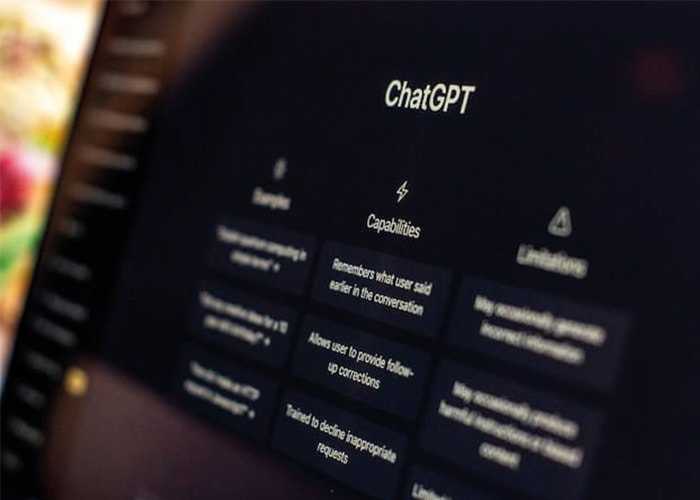Summer Boarding Courses
Artificial Intelligence in Education

With the new AI chatbot Chat GPT released late last year, fewer subjects have caught the imagination in education more than the use of artificial intelligence. In a sector historically equipped by a traditional world of blackboards and paper, it is exciting to explore the current uses of AI tools in the classroom and their potential in bringing education further into the 21st century.
But as new and exciting as these technological developments are, what are the dangers of being overly reliant on this exciting new technology? And what are we at risk of losing as the teaching profession moves further into the future?
In this article, we shall have a quick overview of the main pros and cons concerning AI in education, which you really don’t have to be a technophile to follow.
Chat GPT and the pros of AI in education

Launched by OpenAI, Chat GPT is a super advanced chatbot, which has become one of the most trending subjects today about AI in education. If you have never used it before, the user types in a question and it instantly generates an answer. In writing this blog and wanting to understand the pros of AI-based tools, SBC tried Chat GPT for the first time, typed in – ‘how is artificial intelligence used in education?’ and within a second it came up with this:
Artificial Intelligence (AI) is increasingly being used in education to enhance and personalise the learning experience for students. AI-powered educational tools can help educators automate administrative tasks, grade assignments, and offer real-time feedback to students.
Whilst looking more closely at the writing, it isn’t unimaginable that this paragraph could have been written by a bright student. The tone of the wording – ‘is increasingly being used’ sounds natural enough, and the quick listing of school uses is logically sequenced. But there is a coldness to the words ‘automate’ and ‘educators’ that certainly blows the machine’s cover. But overall, it is impressive.
In relation to learning, a huge positive of Chat GPT is how effectively it acts as a starting point in gaining an overall background to a topic. Its instant response to a query bypasses navigating through multiple sources on Google, so it can be used to jumpstart initial research and be used to prompt students on what to research next.
Chat GPT cons
But what about plagiarism? At first glance, what is immediately interesting is that Chat GPT does not appear to be plagiarism in the traditional sense, insofar as the work of another author isn’t being copied outright. However, it is cheating in that the answer or essay generated, was not written by you. But thankfully, teachers and parents can rely on more than their intuition if they have any suspicions, as the creators of Chat GPT have also created a tool to detect AI written writing, giving real power back to help combat the misuse of AI technology.
Other potential cons of Chat GPT
Less engagement
The knock-on effects of being overly reliant on AI for homework and coursework are there for all to see. Being able to have queries to questions appear so quickly without wider research, raises the concern of how deeply students are engaging with learning material. Visiting a library should never feel like a nostalgic act, but a place where independent study can still begin.
Exams
Instantly accessed essays may also reduce the ownership students have in developing their own personal perspective to a subject matter, which may hinder knowledge being more deeply internalised for exams, where students are obviously without the help of AI.
Teacher – student interaction
An overreliance on learning from tools such as Chat GPT may also affect a student’s perception of what the role of a teacher is and the expectation of how a teacher should support them. So much of a healthy classroom dynamic is rooted in the timeless communicative skill of raising your hand and asking for help, which may be practised less if a student is bypassing this vocal interaction for their laptop keyboard.
Pros of other AI tools used in education.
A significant positive of Chat GPT is that, at present, it is free to use, but what about other AI tools which aren’t accessible to most schools at present but might be utilised more in the future? Let’s zoom in on everything from course creation to virtual learning assistance.
Course creation
Imagine telling your favourite teacher that soon they won’t be spending Sunday afternoons and summer holidays planning lessons and courses, and that the support they crave in teaching even more personalised lessons is there.
With the help of AI the course creation process can now be streamlined much more easily, saving much-needed time. Whether teachers are using premade templates or starting from scratch, with the support of AI software interactive courses can now be created seamlessly.
Machine Learning
In reading about technological advances in the classroom, you may have come across the term ‘machine learning’, which sadly for sci-fi fans isn’t a robot at the whiteboard just yet; but something with very real implications.
Machine learning in education is a form of personalised learning that could be used to provide each student with a more individualised educational experience. Those of you who use the Duolingo app would have already seen examples of machine learning in action.
With the use of machine learning in schools, students can access e-learning solutions such as study guides, lecture notes, and practice questions, which allow students to be guided through their individual learning, helping them to follow the pace they want, enabling them to make their own decisions about what to learn.
Currently, teachers are using machine learning to spot struggling students sooner and to take action to boost success and retention. It can also support teachers in creating more personalised lesson plans, analysing student performance data, or even be used to learn from machines directly in how to use learning algorithms to improve student learning outcomes.
In short, machine learning is a real game changer for teaching.
Personalised Learning
For decades a more student-centred learning approach has been held back by education being a ‘one size fits all system’ and a student’s potential being measured by lines of best fit.
And it may sound improbable, but AI can actually help combat this, and make teaching more personalised. Platforms such as Riiid Labs can help teachers to adjust to students’ learning speeds, knowledge levels, and specific targets providing what it calls an ‘exponential learning experience’. Through using its AI Tutor and AI Coach tools it can also provide detailed support to students, helping students with focus and with retaining information throughout the learning process.
In a not-so-distant future more minds may boggle at just how relatively little we knew about the students sat in front of us in a classroom before AI; but needless to say, the individualization of learning can pose privacy and security risks that will certainly need to be managed carefully, and there will always be the concern of taking the complex challenge of meeting the needs of larger classes, and overcomplicating that challenge further with more data.
But either way, AI will help enable teachers to know their students’ academic potential more so than ever before.
Inclusion and virtual learning assistance
Being a teacher, you are there because you want to give all that you can in creating an inclusive classroom environment and want all to be able to follow you. You want your class to be successful at achieving their learning aims and not to leave anyone behind. With artificial intelligence in education, inclusion is not just a utopia but is something which technology can help support.
Students with visual/hearing impairments or students who use different languages can now get real-time subtitles to help them follow all that their teacher says. With the help of PowerPoint plugins such as Presentation Translator, teachers now have a significant tool in teaching classes where everyone can have universal access to learning.
Conclusion
At the heart of education lies a fundamentally human connection between teacher and student, that should always be valued, and what is clear from the AI tools available is that technology can be used to strengthen this bond.
From technology in education to assist with administrative tasks, visual or hearing impairments, and access to speech recognition software, to testing systems, there is so much potential with how AI can help teachers to find educational solutions.
As AI becomes more widely used in education, more educators should ask, what can my students gain from me, what they can’t from technology?’ This is an empowering question and one that should always be explored.
SBC
At SBC we are at our best when working with students. We thrive with human interaction and engage students by challenging them to find the solutions to relevant problems, and encourage all to explore complex issues through discussion, and empower students to believe in their own voice, and not just a machine’s.
On each of our courses, our academic programmes challenge students to think critically and to use 21st-century skills, and our teachers create tasks with creativity and empathy, with our academic staff never setting a task for the sake of it, but always from the perspective of – ‘would I be challenged and excited by this if I was my student’s age?’
At SBC we believe in inspiring students to use the innovations of the present whilst never neglecting vital social skills. We champion discussion, collaboration, and understanding, and inspire students on each of our courses to excel at using them all.
To learn more about our future focussed courses and how you can be part of a modern learning community from the four corners of the globe. Click here to find out more.
Find out more
Our admissions experts are happy to help answer any questions you may have.

